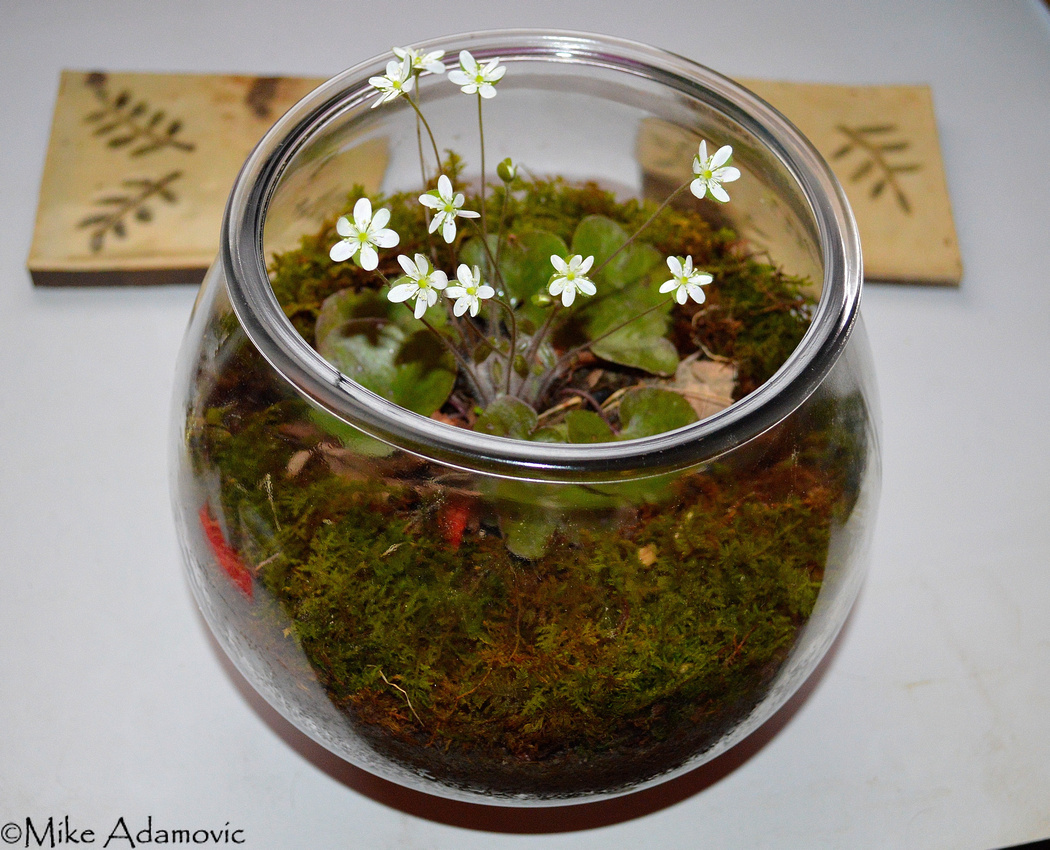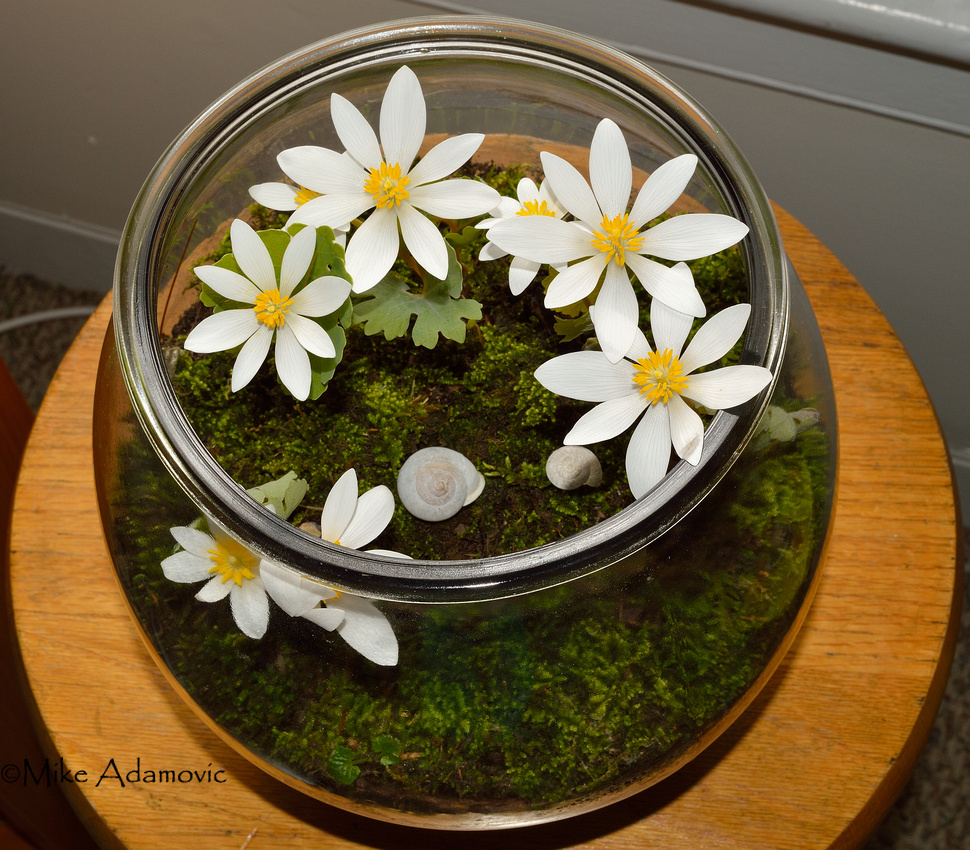Terrariums


A terrarium is a world within itself, a tiny ecosystem capable of surviving almost entirely without human assistance. Add plants to a glass enclosure, sprinkle in a bit of soil and water, and ensure the system receives adequate sunlight, and a self-regulating system emerges. Creating one and watching it thrive bottled up amidst a harsh artificial human environment is a rewarding experience that provides a greater appreciation of the fortitude of nature. Adding a terrarium to the home or work space can help brighten up the surroundings in a natural and low-cost way that supersedes cut floral arrangements and prosaic static wall paintings. These elegant systems are living artwork, as it were, and continually morph before your eyes into a novel and inspiring mural of unique form and color.
Terrariums are relatively easy to construct and require only a handful of basic supplies. To start out you’ll need a glass container (with or without a lid depending on whether you want an open of closed terrarium), medium sized river rocks (1-1.5 inches in length), coarse sand, and rich soil. The glass containers can typically be found at larger craft stores. Michaels and Hobby Lobby have a wide selection at low cost.
It’s important to include three substrate layers when building a terrarium in order for it to remain healthy. I add river stones to the bottom, sand on top of that, and finally soil above the sand. Thickness wise you’ll have to gauge for yourself depending on the size of the container. I use a ratio of 2:1:3—two parts stone, one part sand, and for the largest addition, 3 parts soil.
Unlike potted plants, a terrarium lacks drainage holes in the bottom of the container. Excess moisture will cause a whole slew of problems, especially if it has a lid. Watering is therefore a delicate task. The jumbled rocks on the bottom serve to help mitigate the inclusion of extra water by acting as a reservoir. Rocks of medium size work best because the spaces among them hold a fair amount of water and allow you to see exactly how damp the system is. The sand serves as a buffer between the two other layers and helps facilitate drainage.
When it comes to choosing plants, there’s an extremely wide variety that can be grown successfully in a terrarium. Traditionalists tend to use small and slow growing species for closed terrariums and succulents or other plants that do well with minimal moisture for open ones. As long as the plants don’t grow excessively tall you can essentially include anything. I personally enjoy incorporating native flowering species into the mix, though they do frequently require a bit of effort to maintain.


If you’re after a stable, long-term terrarium, I would suggest sticking primarily to ferns, mosses, and other non-flowering plants. On the other hand, if you desire something more visually striking, and can handle a system that is relatively short-lived, an optimal addition would be spring ephemeral wildflowers.
Violets, hepatica, red columbine, spring beauty, rue anemone, and trailing arbutus are among the multitude of small to medium sized ephemerals that can survive the rigors of confinement in a container. They should be added in the early spring just as the foliage begins to appear. Plants will remain in flower for a month at most, after which they should be taken out. They can be replanted in an outdoor garden until the following spring. Ephemerals can make do in a closed system in the beginning, but as the plants prepare to flower they will often exceed the height of the lid and it must be removed.
Spring ephemerals can sometimes be bought at nurseries, but more often than not, they will be difficult to track down. Seeds can be purchased online for harder to find varieties. Of course, plants can also be collected in the wild, but this should only be undertaken if they’re in abundance or are threatened with imminent destruction.
Once your chosen plants have been placed inside and a layer of soil tightly packed around the bases to make everything level, it’s time to add the final touches. For a lush and verdant look, as well as to keep the top layers of soil and roots sufficiently damp, it’s important to use moss as a covering for bare soil. What grass is to lawns, moss is to terrariums. Any type will work. A thick layer is probably best, as it lends a feeling of fecundity and age to the miniature ecosystem. Moss is also useful for indicating whether the system is properly hydrated. It should always be slightly damp to the touch.
A closed terrarium is a microcosm of earth. The glass dome traps incoming solar radiation the same way our atmosphere does, producing a greenhouse effect. As the system warms, plants gradually draw water from the soil and rocky reservoir, transpiring it into the air above where it condenses on the glass, and either drips or slides back down the walls to continue the cycle. A properly constructed terrarium will require only the occasional maintenance.

